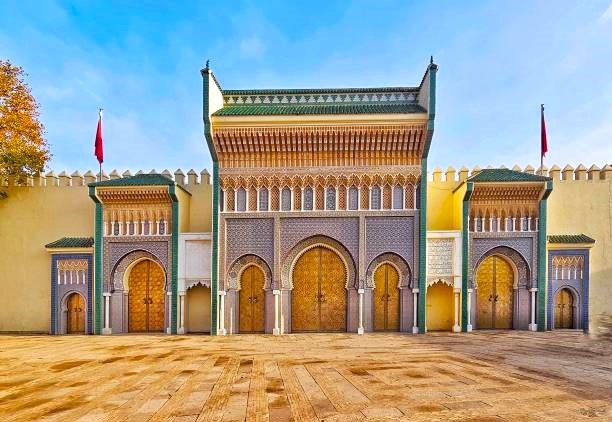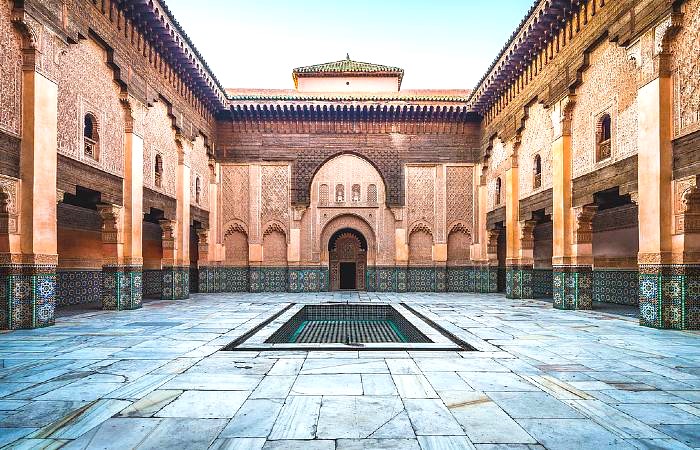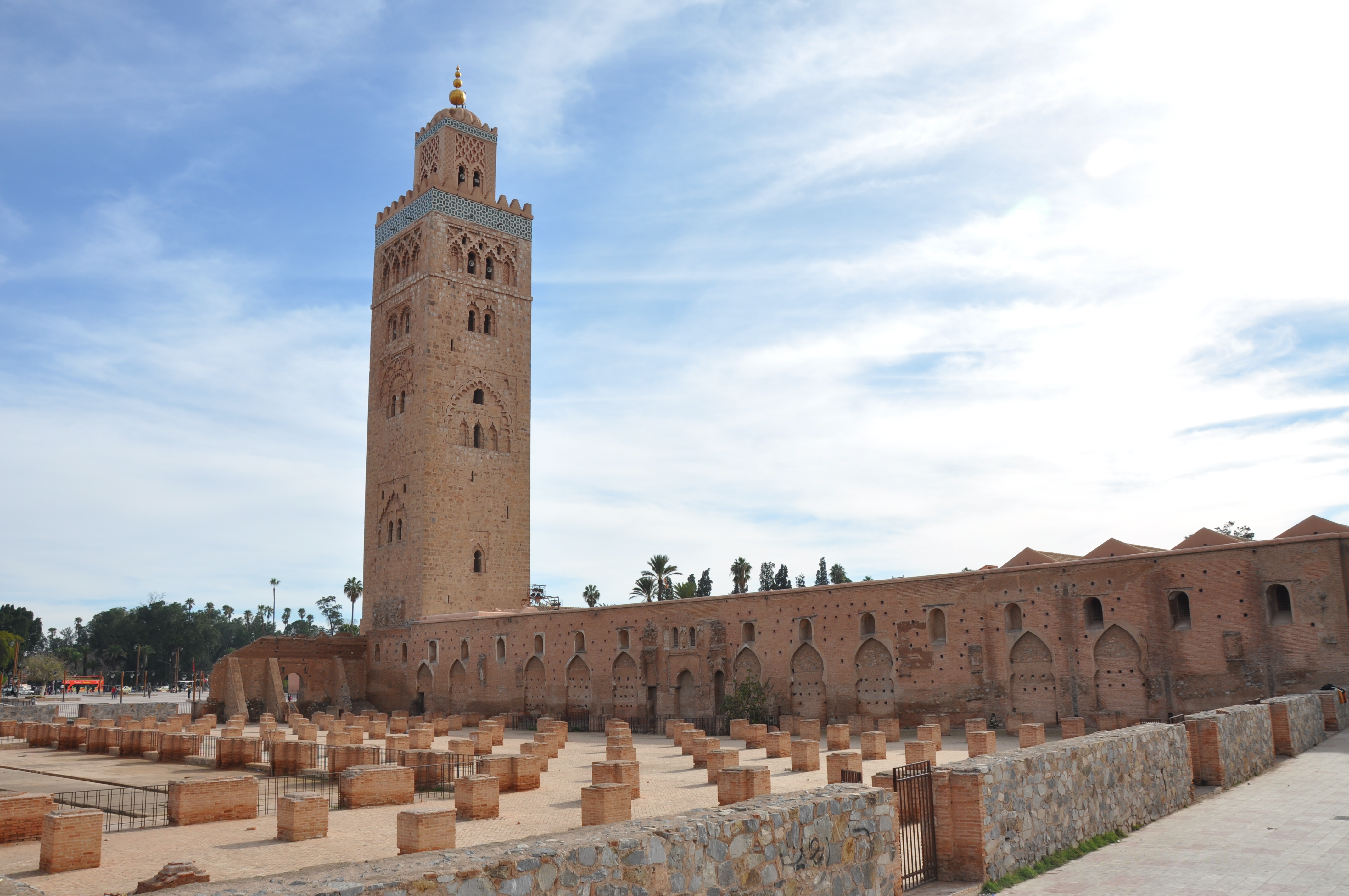Famous Architectural Landmarks in Morocco: A Journey Through Time and Art
Morocco is a land where history, art, and architecture converge, offering travelers some of the world’s most captivating landmarks. From imperial cities like Fes, Marrakech, Meknes, and Rabat to remote kasbahs and desert fortresses, each structure reflects centuries of craftsmanship, cultural fusion, and spiritual expression.
Among the most iconic landmarks are the Hassan Tower in Rabat, the Koutoubia Mosque in Marrakech, and the UNESCO-listed Ait Ben Haddou Kasbah. These sites are not just architectural marvels; they are living stories of Morocco’s dynasties, artisans, and people, preserved through time for travelers to explore.
Whether wandering through the medina of Fes, marveling at Andalusian-inspired courtyards, or discovering the intricate zellij and stucco work in historic palaces, visitors can experience a journey through centuries of Moroccan history and artistry.
This guide will take you through the most famous architectural landmarks in Morocco, highlighting their history, artistic details, and cultural significance, helping you plan an unforgettable architectural adventure in the heart of North Africa.
Mosques, Medersas, and Palaces: The Spiritual and Royal Icons of Morocco
Moroccan landmarks are a reflection of both spiritual devotion and royal grandeur. Among the most celebrated are mosques, medersas (Islamic schools), and palaces, each showcasing Morocco’s architectural mastery, craftsmanship, and cultural history.
Royal Palace of Fes
The Royal Palace (Dar el Makhzen) of Fes exemplifies Morocco’s regal architecture. Its bronze doors, expansive gardens, and geometric mosaics showcase the luxury and artistry of the Alaouite dynasty. Though access is limited to the public, the palace’s exterior walls and gates offer travelers a glimpse into the grandeur of Morocco’s royal history.
Each of these landmarks provides more than aesthetic pleasure; they are testaments to centuries of religious devotion, scholarly pursuit, and royal ambition. Visitors seeking to explore these architectural wonders can plan an immersive experience through Holiday Morocco Tours’ guided Imperial City tours, discovering the history and stories behind every wall, courtyard, and minaret.

Ben Youssef Madrasa in Marrakech
The Ben Youssef Madrasa is a historic Islamic school known for its stunning stucco carvings, woodwork, and tile mosaics. Once a place of learning for hundreds of students, it represents the intellectual and artistic achievements of Morocco’s Islamic heritage. Its intricate courtyards and delicate designs make it one of the most visited architectural landmarks in Marrakech.

Koutoubia Mosque in Marrakech
The Koutoubia Mosque is one of Morocco’s most iconic religious structures. Its minaret towers 77 meters high, visible from much of Marrakech, and serves as a prime example of Almohad architecture. The mosque’s elegant arches, intricate zellij tiles, and serene courtyard illustrate the harmony between function, faith, and beauty that defines Moroccan mosque architecture. Travelers exploring Marrakech will find the mosque a symbol of the city’s spiritual and historical identity.

Kasbahs and Fortresses: Guardians of Morocco’s Past
Morocco’s kasbahs and fortresses stand as timeless sentinels of history, blending defense, artistry, and cultural heritage. These structures, often made from earthen clay and stone, were built to withstand both harsh climates and invading armies, while also serving as centers of administration and community life.
One of the most famous examples is the Ait Ben Haddou Kasbah, a UNESCO World Heritage Site. This fortified village features towering walls, narrow alleys, and traditional mudbrick houses, offering travelers a glimpse into Morocco’s desert architecture and centuries-old Berber traditions. Walking through its alleys feels like stepping back in time, where every corner tells a story of resilience, craftsmanship, and communal life.
Beyond the southern deserts, kasbahs such as Telouet in the High Atlas Mountains showcase the opulence of Moroccan rulers. With intricate stucco decorations, carved cedar ceilings, and colorful mosaics, these kasbahs were once homes of influential families and remain symbols of Morocco’s dynastic history and architectural skill.
For travelers seeking a deeper connection with Morocco’s past, exploring these historic fortresses provides not only stunning photography opportunities but also an immersive understanding of how architecture, culture, and daily life intertwined. Tours such as the Morocco Sahara Desert Tours allow visitors to experience these kasbahs in their full cultural and historical context.
The Cultural and Historical Significance of Kasbahs and Fortresses
Kasbahs and fortresses are more than architectural marvels; they are living symbols of Morocco’s history, culture, and community values. Originating from Berber traditions, these structures were designed to provide protection against invaders while fostering a sense of community and shared identity. Their fortified walls and strategic locations reflect the challenges of defending territories in the rugged landscapes of the Atlas Mountains and southern deserts.
Historically, kasbahs were centers of administration, trade, and social life, often housing ruling families, soldiers, and local communities. They served as a hub for decision-making, conflict resolution, and cultural exchange, connecting remote regions to major cities and imperial centers. Sites like the Ait Ben Haddou Kasbah not only illustrate military ingenuity but also preserve centuries of Berber craftsmanship, building techniques, and artistic traditions.
Culturally, these fortresses embody Moroccan values of resilience, hospitality, and heritage. The communal courtyards, shared spaces, and defensive architecture reflect a society where community ties, protection, and family life were paramount. Even today, these structures are celebrated as a symbol of Morocco’s enduring identity, inspiring travelers to appreciate the interplay between history, culture, and architecture.
Exploring kasbahs and fortresses allows visitors to connect deeply with Morocco’s historical roots and gain insight into how architecture shaped social, political, and cultural life over centuries. For a complete experience, guided tours like the Imperial City Tour from Fes provide context on the historical and cultural significance of these remarkable sites.
Don’t just admire Moroccan architecture from afar !
Let Holiday Morocco Tours craft your personalized journey, guiding you through the most famous landmarks, hidden gems, and architectural treasures across Morocco. Connect with history, culture, and art on a tour designed to inspire and captivate.
Modern Influence and Contemporary Moroccan Architecture
While Morocco’s architecture is rooted in centuries of tradition, it continues to evolve through modern and contemporary influences. Cities like Casablanca and Rabat showcase how colonial, modernist, and contemporary design has blended seamlessly with traditional Moroccan styles, creating a unique architectural landscape.
During the French Protectorate in the early 20th century, architects introduced wide boulevards, Art Deco facades, and urban planning concepts that transformed Morocco’s urban centers. In Casablanca, for example, buildings like the Hassan II Mosque demonstrate how traditional Moroccan craftsmanship, such as zellij, carved cedar, and stucco work, can coexist with modern engineering and scale.
Contemporary Moroccan architecture also embraces innovation while paying homage to heritage. Architects today integrate sustainable materials, minimalist design, and modern functionality into traditional forms like riads, courtyards, and palaces. The result is a harmonious dialogue between the past and present, preserving Morocco’s cultural identity while accommodating modern lifestyles.
Exploring contemporary spaces alongside historical landmarks provides travelers with a full appreciation of Morocco’s architectural evolution. Guided experiences, such as the Imperial City Tour from Fes, allow visitors to witness firsthand how ancient techniques, artistic motifs, and modern innovations continue to define the country’s urban and cultural identity.
Planning Your Architectural Journey in Morocco
Exploring Morocco’s famous architectural landmarks is an unforgettable way to connect with the country’s history, culture, and artistry. From the majestic mosques and royal palaces to the ancient kasbahs, medersas, and serene riads, each site offers a unique glimpse into the creativity and heritage of Moroccan civilization.
To make the most of your journey, consider guided tours that provide both historical context and cultural insight. For example, the Imperial City Tour from Fes allows visitors to explore Fes, Marrakech, Meknes, and Rabat, highlighting iconic landmarks, medina streets, and artistic details that are easy to overlook when traveling independently.
Whether you are drawn to the Andalusian-inspired courtyards, the intricate zellij and stucco work, or the fortified kasbahs of the south, a well-planned itinerary ensures that every moment is immersive, meaningful, and memorable. Travelers can also experience local culture, cuisine, and crafts, making the architectural exploration even richer.
Don’t just admire Moroccan architecture from afar. Let Holiday Morocco Tours craft your personalized journey, guiding you through the most famous landmarks, hidden gems, and architectural treasures across Morocco. Connect with history, culture, and art on a tour designed to inspire and captivate.
